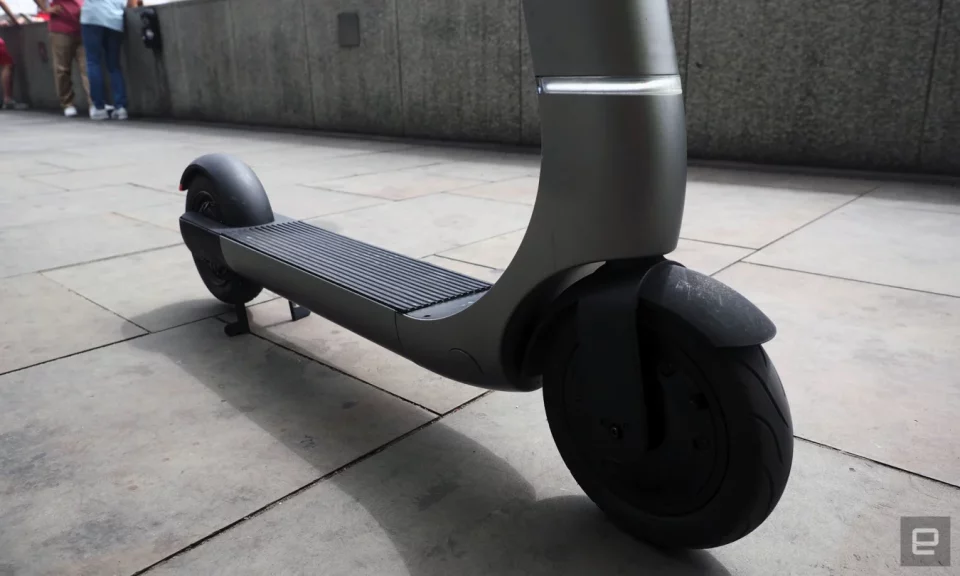We’re living in an age of micromobility, where city dwellers are given more options to get around than ever before. Bike-sharing schemes, which quickly swelled to include e-scooters, are big deals in major areas where the commuting distances are just that bit too long to walk. But scooters have yet to achieve the same legitimacy as the bicycle with mainstream users. In part, this is because it’s still a relatively emerging technology, but also because the scooter has the whiff of a toy about it. After all, the Segway was meant to revolutionize transportation, as it headed on its one-way journey toward the novelty store. Similarly, hoverboards never had any real shot at making its way across the rubicon that separates useless from utility. E-scooters are already on the other side of the water, but will they stay there long term?
It’s something that the team at Bo Mobility believes is entirely possible, so long as there’s some serious, grown-up effort put in today. The UK-based company was founded by Oscar Morgan, Harry Wills and Luke Robus, who met while working at Williams Advanced Engineering, part of the F1 team. They’ve spent the last three years working on Bo M, a serious e-scooter that’s been conceived from the ground up to be exactly that. It’s promised to be better designed, run better, and have a longer lifespan than any of the quasi-toy products that litter our streets today. I’ve ridden the prototype (two, in fact) and I already feel confident that it’s a quantum leap compared to what we currently have.
Daniel Cooper
The first thing you’ll notice about Bo is its shape, with a swan neck that arches gracefully from the steering column to the deck. There’s no hinge or fixing joint between the two, as it’s not built to fold or compress down in any way – you park it in its upright position. Ditching the fold means that you can massively increase strength, and gives its creators room to add in some extra features that you won’t find on your typical $399 scooter. “People say ‘you guys made a pretty scooter,’” says Oscar Morgan, co-founder, “but it’s really important to appreciate that it has a fundamentally different architecture … When you move from a tubular frame to a proper monocoque construction, you move all the stresses. It makes it stronger, but it also means that we can start to package stuff.”
And the most important thing in the package – nestled inside that beefy curved cowl, is a product called Safesteer. It is, for now, a series of prototypes, each being refined before the scooter’s launch next year. And it’s top secret, beyond the fact that it’s a hybrid analogue / digital device that’s designed to improve balance and maneuverability. (What I have been able to get out of Morgan: It’s not a gyroscope, which was how something like the Segway managed to stay upright.) After all, most e-scooters require a little bit of a learning curve, especially the cheaply- made ones. It’s not for nothing that most e-scooters require you to keep both hands on the bars, unlike a bike which can be ridden one (or, if you’re brave, no) handed.
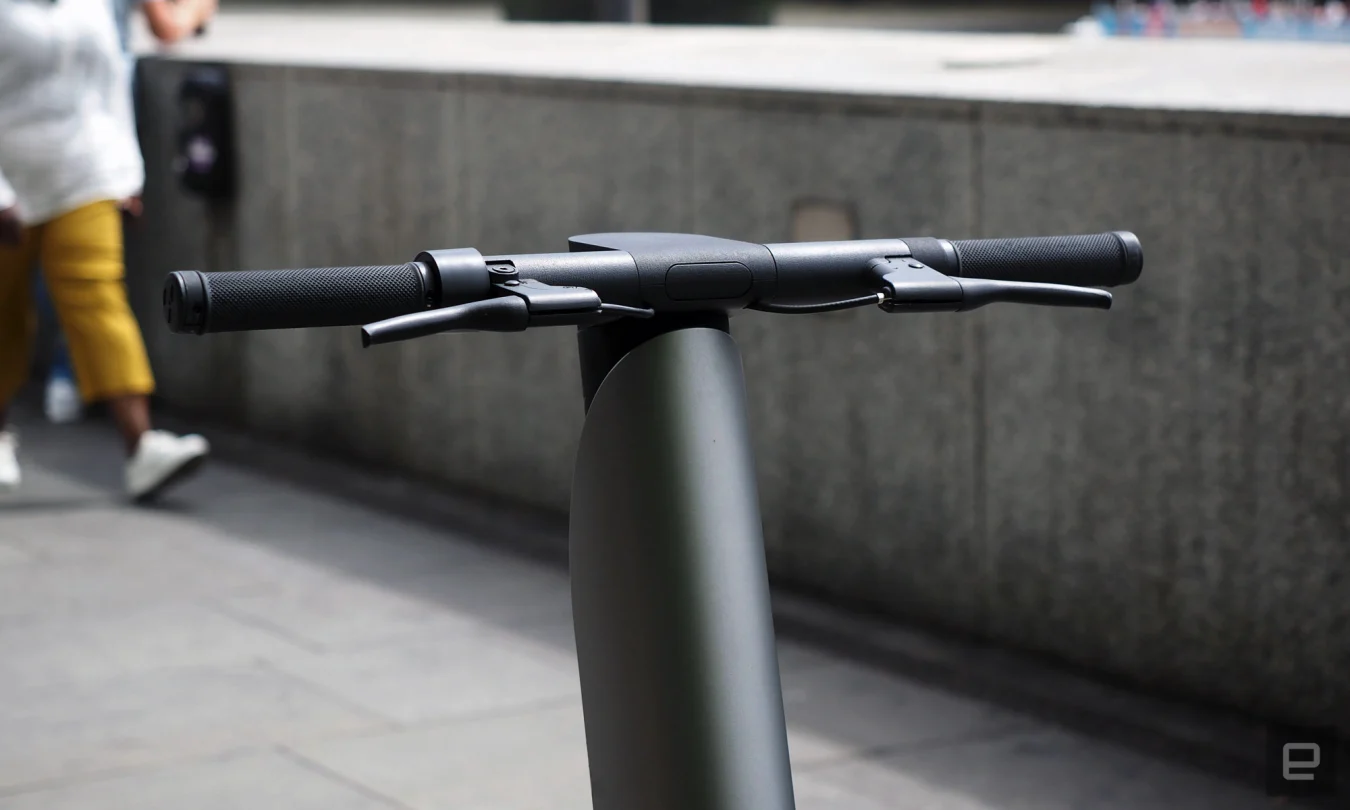
Daniel Cooper
“Going from a big bike wheel to a [small] scooter wheel,” said Morgan, “you lose all of your gyroscopic stability.” Safesteer will hopefully redress the balance, enabling you to ride around with the same level of indifference as you would with a bike. And, similarly, Morgan and Wills’ team has sweated the details in terms of weight distribution, wheel dynamics and suspension. Or, in this case, a lack of it. The pair found that replacing the 8-inch tires seen on most scooters with bigger, 10-inch models offers far greater balance and grip. That enabled them to leave out the mechanical suspension, massively reducing weight, which improved maneuverability. You may think that the ride quality suffers, but the company is working on AirDeck, adding an elastomer to the footplate which will act as a shock absorber, similar to that you’d find on a pricey running shoe. Then again, you’re not going to be riding your e-scooter into too many potholes no matter how comfortable the ride is (and Bo’s is nicer and smoother than some I’ve tried).
And then there’s the load hook – which is such a small addition but one that the team, again, sweated over. Morgan explained that as part of the idea to pull people out of their cars and onto scooters, that they’d need some secure way to hold luggage. “You see lots of people riding with bags,” said Wills, “hanging them from the handlebars, and it’s really dangerous when you’re riding around.” “[The load] unbalances and swings, and then you get a bit of tank slap when you hit a bend or corner,” he added. Instead, a centrally-mounted pair of hooks buried inside the monocoque will electrically roll out, letting you hook your bag onto the scooter’s center of weight.
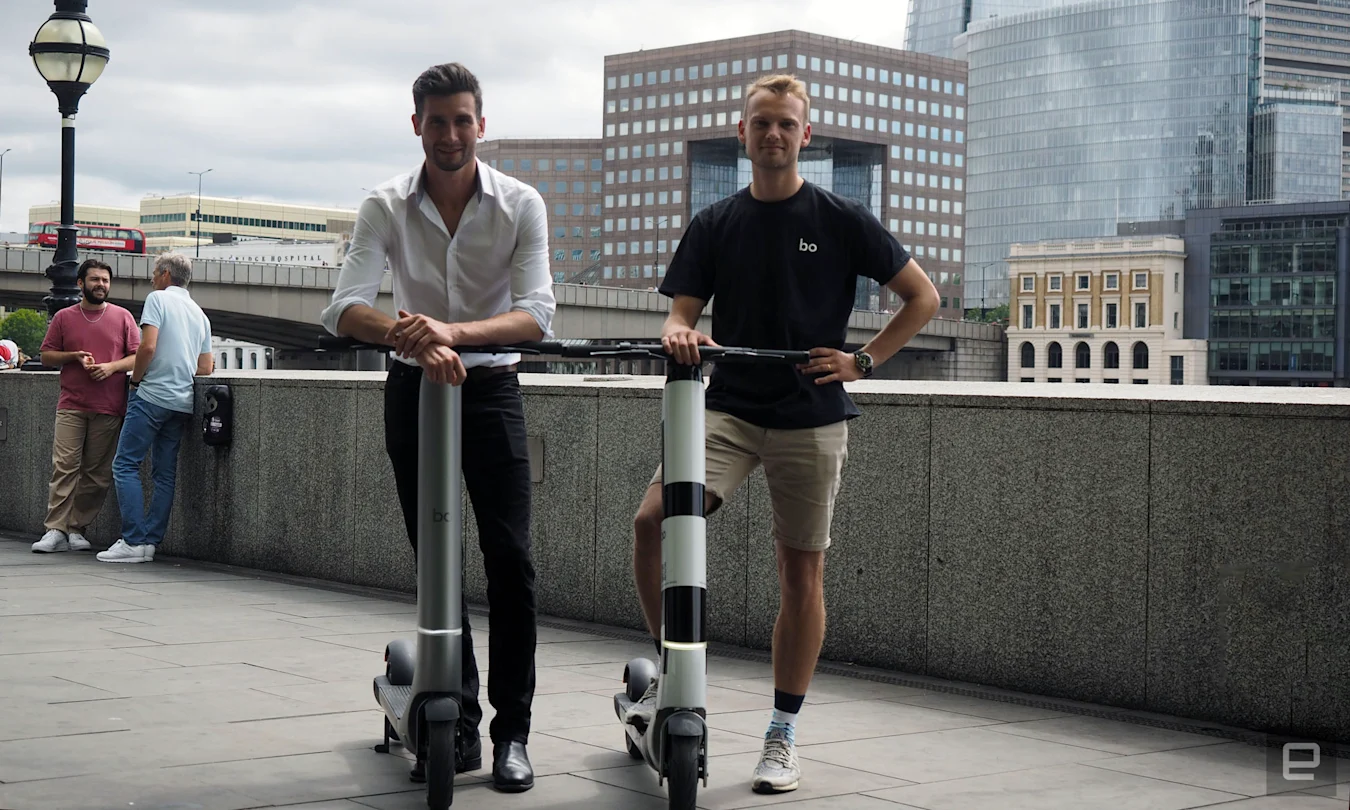
Daniel Cooper
Naturally, users will be paying for the privilege of riding Bo when it makes it debut in the spring of 2023. The price for the M is £1,995 (roughly $2,400), or as a subscription product for £69 ($83) per month. Despite the fact that the product isn’t going to be available for more than half a year, there’s been a surprising amount of people pre-ordering a model. And we can expect to see plenty more models from the company if the M becomes a big seller. “Tesla didn’t launch with the Model Three,” said CTO Harry Wills, and like most companies, plans to start with a high-end offering before producing increasingly more affordable models. “Starting right, with a group of customers that adore the product, and then bringing it out to more accessible price points is what’s really important to us,” said Wills.
Of course, the economics of buying (or subscribing) to a scooter for upward of two grand is different compared to a £399 Xiaomi. It’s a serious, long-term investment, and something that the pair are determined to ensure they can justify. “No-one trusts Bo yet,” said Morgan, “we’re a new company, and so we have to give [our customers] great experience.” That means a generous warranty scheme, at least for the earliest adopters, and plenty of contact with the team to help iron out any kinks.
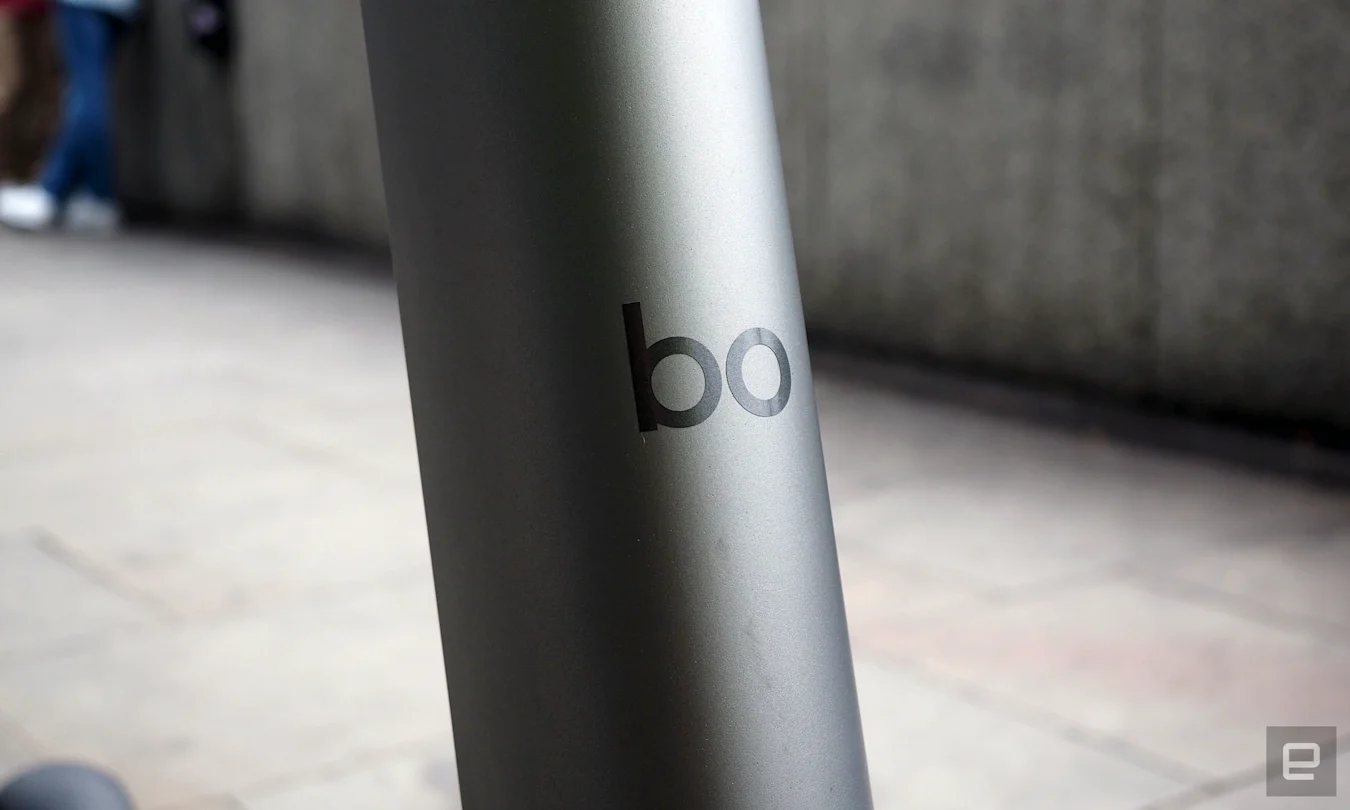
Daniel Cooper
And plenty of effort has been dedicated to making sure that M will run for years and years. Wills explained that “someone with very basic tools – an Allen key and the ability to plug and unplug – should be able to swap the battery if they so choose.” He added that nobody should expect to need to make such a drastic repair for many years, but that when the time comes, it’ll be easy for anyone to achieve. Wills said that the team has sweated the fine details to ensure that “all of the cables are in the right place and the connectors are in the right place.” Not to mention that a product that’s easier to maintain is also often easier to build, which should reduce costs on the manufacturing side.
Neither Morgan nor Wills are new to the world of scooter manufacture, and both worked for British e-mobility retailer and manufacturer Pure Electric. This is not their first scooter product, and they’re taking lessons they’ve already learned. Wills said that early buyers have signed up to the “ride quality, the safety and the overall aesthetics of the product.” In fact, Wills said that people have walked over to them and offered cash just to own the prototypes.
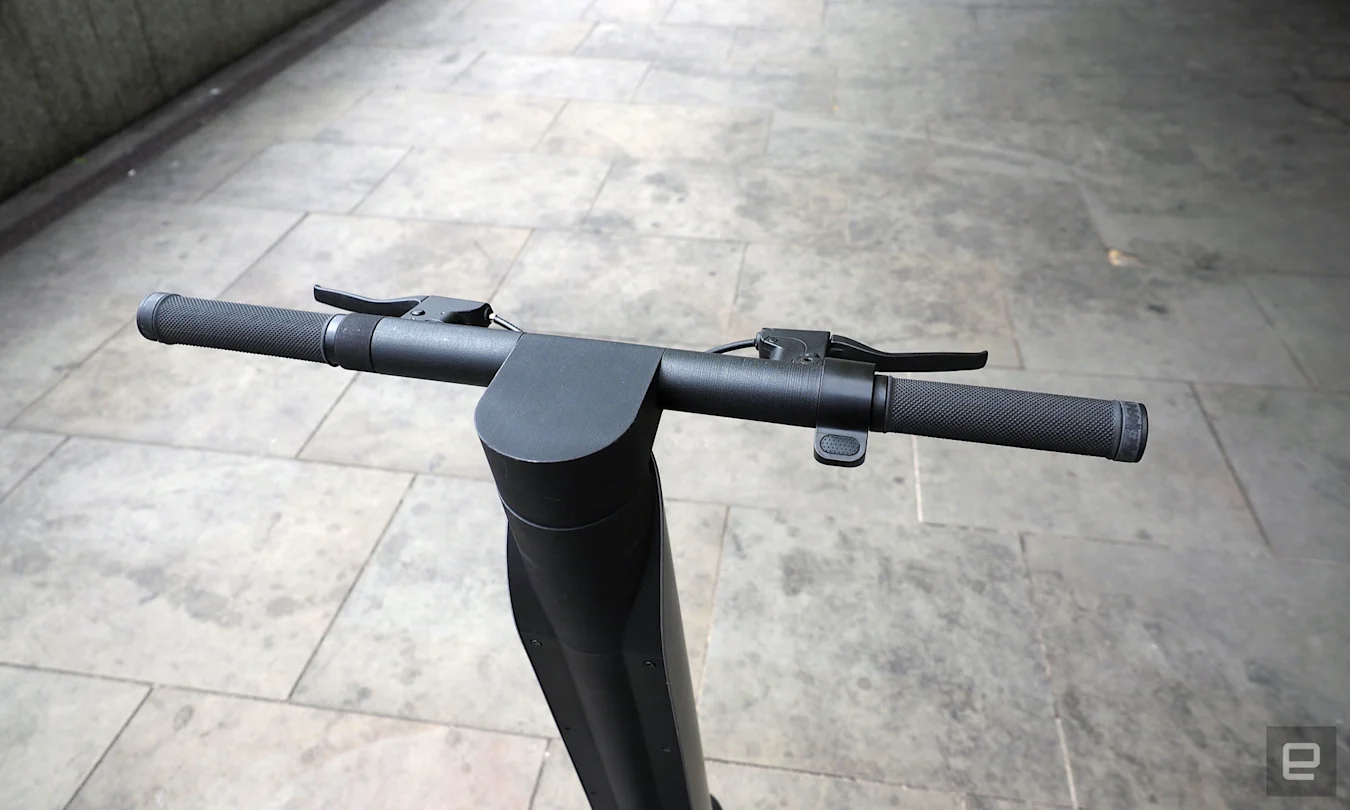
Daniel Cooper
I spent longer than I’d planned riding the two Bo M units up and down a private track in London. (Scooters which aren’t part of a licensed scooter-sharing trial remain illegal to ride on public roads in the UK, although that’s expected to change in 2023.) The first thing to say is that the benefits of Safesteer are obvious from the second you step onto the deck and push off. Unlike most regular scooters, which always feel like they are seconds from disaster, this felt solidly planted on the road. The grip and ability to turn at very low speeds is useful for weaving through narrow spaces (and sliding through some tightly-packed anti-traffic bollards).
One of my bad habits when riding most standard e-scooters is that I’ll bend my knees to try and lower my center of gravity. I’m sufficiently paranoid about taking a tumble that I never want to just stand up and ride the thing as you’re meant to. But it took me about half a minute before I realized that I didn’t just have to stand up on Bo M, but I could actually relax, stop gripping the handles so tightly and enjoy the ride, and the scenery. It’s an experience that is sufficiently car-like that I have to agree with the claim that it’s the sort of scooter only a group of “serious car guys” could build.
Morgan said that the other thing that they liked doing was building-in surprises for its would-be user base. The seamless body and flat, unmarked top exudes class, even in this early, 3D-printed-component state. Wills asked me to identify the power on / off switch, something that I proceeded to work my way through the scooter’s body, and down towards its deck, without much success. After a minute or so of fruitless hunting, Wills reached over and powered the unit down in a way I wouldn’t have spotted if I’d been there an hour (I’m sworn to secrecy as to where the switch is). If the company can offer the same level of surprise and delight to all of its users next year, then it’ll be off to a very strong start.
All products recommended by Engadget are selected by our editorial team, independent of our parent company. Some of our stories include affiliate links. If you buy something through one of these links, we may earn an affiliate commission.
